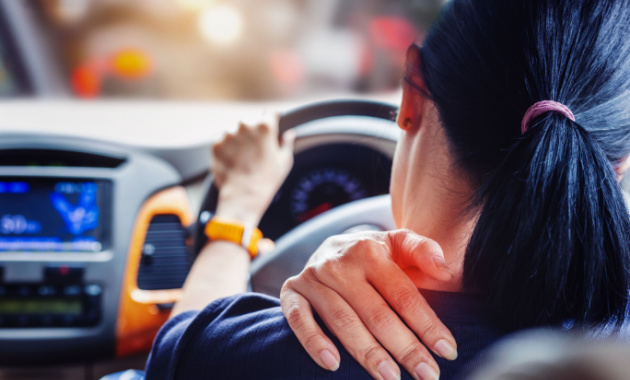
Driving is an essential part of modern life, offering convenience, mobility, and freedom. However, for many, spending extended hours behind the wheel can lead to discomfort, pain, and stiffness, particularly in the back, neck, and legs. Whether you’re a daily commuter, a road trip enthusiast, or a professional driver, it’s crucial to prioritize your comfort and well-being on the road. In this article, we’ll explore the top 8 tips to help you ease pain and stiffness while driving.
The Toll of Prolonged Driving
Before delving into our tips, it’s essential to understand the impact that prolonged driving can have on your body. According to statistics, the average time spent by an individual in rush hour traffic in major Indian cities is a staggering 200 hours per year. This considerable amount of time spent seated in a vehicle can take a toll on your physical health.
The most common complaints among many are related to pain and stiffness in the back, neck, and legs. Over time, these issues can become chronic and significantly affect your overall well-being. Fortunately, there are practical steps you can take to alleviate discomfort and make your journeys more comfortable. So without any further delay, let’s have a look at the 8 effective tips to ease pain and stiffness while driving.
1. Adjust Your Steering Wheel and Seat
Proper ergonomics play a crucial role in preventing discomfort while driving. Ensure that your steering wheel is positioned so that you can easily reach it without having to lean forward excessively. Your elbows should have a slight bend when holding the wheel, promoting a relaxed and comfortable driving posture. Additionally, adjust your seat so that your feet can comfortably reach the pedals without straining your legs. A seat that’s too far back or too close to the pedals can lead to discomfort and fatigue over long drives.
2. Use Lumbar Support
Modern car seats often come with adjustable lumbar support, but if your vehicle lacks this feature, consider using a small cushion to support the natural curve of your lower back. Placing this support at the base of your spine helps maintain the natural curve of your lower back, preventing slouching and reducing pressure on your spine.
3. Knee Elevation
Raise your knee to your chest and hold it for a few seconds before lowering it again. This simple movement engages your leg muscles and improves circulation.
4. Neck Rotations
Bend your neck from left to right and rotate it slowly to relieve neck stiffness. This exercise targets the neck and shoulder muscles, reducing tension.
5. Side Bending
Stop your car, take a break, and while stationary, stand straight and bend your body from right to left. This motion helps reduce tension in your back, particularly in the lumbar region.
6. Shoulder Rolling
Align your spine, elevate your chest, and roll your shoulders back. This exercise promotes better posture and relieves tension in the neck and upper back.
7. Take Regular Breaks
Sitting for extended periods can lead to stiffness and discomfort. Plan breaks every hour or so to stretch your legs, walk around, and perform simple stretches. Not only does this help relieve physical discomfort, but it also refreshes your mind, making you a safer driver.
8. Stay Hydrated
Lastly, drink plenty of water while driving to prevent dehydration and muscle stiffness. Dehydration can exacerbate existing discomfort, so staying properly hydrated is essential for your overall well-being.
Incorporating these tips and exercises into your driving routine can significantly alleviate pain and stiffness, making your journeys more pleasant and less taxing on your body. Prioritizing your comfort and well-being while driving is an investment in your long-term health and safety on the road. Remember, everyone’s body is different, so it’s essential to find what works best for you. If you experience persistent pain or discomfort while driving, consult a healthcare professional for personalized advice.
(The article is written by Monalisa Deka, Senior Health Content Editor)